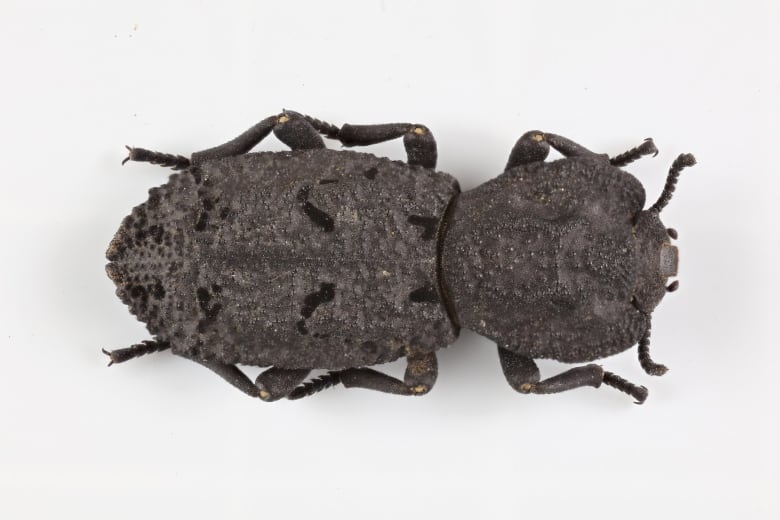The diabolical ironclad beetle's super-tough shell can even resist being run over by a car
Researchers used advanced imaging to look at the microstructure of the beetle's exoskeleton


Originally published on October 24, 2020.
It's an awesome name for an insect: the diabolical ironclad beetle. Its exoskeleton is impenetrable and crush resistant so predators like birds, rodents and lizards simply give up on any hope of a meal, and move on. Curators at the University of California's entomology museum had to use power tools to drill through it because regular steel pins bent when they tried to mount it for display.

David Kisailus, a professor of materials science and engineering at the University of California, Irvine, was part of a team that launched a study to find out how the beetle could be so tough.
A tough jigsaw puzzle
The diabolical ironclad beetle is found throughout the southwest United States where it lives under rocks or inside the bark of trees.
A compression test revealed the diabolical ironclad beetle can withstand a force of 39 thousand times its own body weight. The exoskeleton of this beetle has a much higher concentration of protein than other related beetles, which helps explain its strength and toughness.

Beetles that fly have a moveable fore wing that protects the wing. Because this beetle doesn't fly, that piece has become solid and held together with an interlocking architecture similar to a jigsaw puzzle. That type of geometry adds strength and toughness to the exoskeleton.
Better than modern aircraft technology
Kisalius believes this could lead to applications in the aircraft industry. Some modern aircraft use a combination of materials like carbon fibre and aluminum, held together with fasteners and rivets. Tests revealed that similar joints based on the composition and geometry of the beetle's exoskeleton were both stronger and tougher than current fasteners in use.